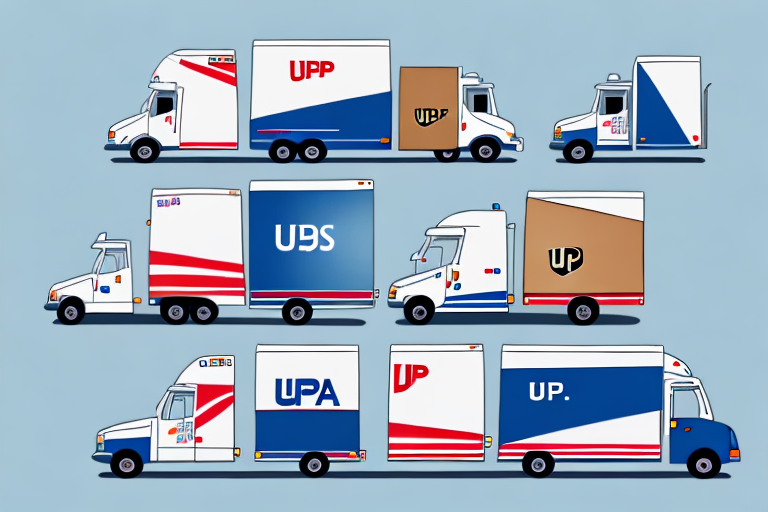Comparing Shipping Rates: Who Offers Cheaper Rates, UPS or USPS?
If you're running a business that requires shipping products to your customers, one of the most important considerations is the shipping rates. The cost of shipping can significantly impact your bottom line, making it essential to compare rates from different providers to find the best deal. In this article, we'll explore the rates of two of the most popular shipping providers in the United States, UPS and USPS, to determine which one offers cheaper rates.
Introduction to Shipping Rates: Understanding the Basics
Shipping rates are the charges imposed by shipping carriers to transport your package from one location to another. Rates can vary based on several factors, including package weight, dimensions, destination, and delivery speed. Additionally, shipping rates are influenced by carriers' pricing strategies, fuel surcharges, and other fees.
Moreover, the type of product being shipped can affect shipping rates. For instance, hazardous materials or fragile items may require special handling and packaging, resulting in higher shipping costs. Always check with your shipping carrier to understand any additional requirements or fees for specific product types.
The Importance of Comparing Shipping Rates
Comparing shipping rates is crucial for businesses because it directly affects profitability. Shipping costs can erode profit margins and make your products less competitive. By comparing rates, you can identify a provider that offers the best value, potentially reducing shipping costs and allowing you to offer competitive pricing to your customers.
Additionally, comparing shipping rates helps you uncover any hidden fees or charges that may not be immediately apparent. Some carriers might offer lower base rates but impose additional fees for fuel surcharges, residential deliveries, or handling. Reviewing rates and fine print ensures you avoid unexpected costs and can budget accurately.
Finding the Best Shipping Provider: UPS vs USPS
Among the top shipping providers in the US, UPS and USPS are the most widely used. Each has its advantages and disadvantages, making it essential to compare their rates and services to determine the best fit for your business needs.
- UPS offers an extensive network of delivery options, including ground, air, and international shipping, as well as same-day and next-day delivery. They provide advanced tracking and delivery notifications, helping keep customers informed about their shipments.
- USPS, being a government-owned organization, is known for its affordable rates, making it a favorable choice for small businesses and individuals. USPS also offers various services, including Priority Mail, Express Mail, and First-Class Mail, catering to different shipping needs.
Analyzing UPS Shipping Rates
UPS is a global shipping company offering reliable and expedited shipping services. They provide a range of options, including ground, air, and international shipping, making UPS suitable for businesses that ship both domestically and internationally. However, UPS shipping rates can be higher than USPS rates, particularly for smaller and lighter packages.
However, UPS offers various discounts and promotions for businesses that ship frequently. These discounts can mitigate higher shipping rates, making UPS a more cost-effective option for high-volume shippers. Additionally, UPS is renowned for excellent customer service and reliable delivery, ensuring packages arrive on time and in good condition.
Analyzing USPS Shipping Rates
USPS is a government-owned organization providing mail and shipping services across the country. USPS is typically recognized for its affordable rates, appealing to small businesses and individuals alike. They offer a range of services such as Priority Mail, Express Mail, and First-Class Mail to suit different shipping needs. However, reliability can sometimes be a concern, and their international shipping options are more limited compared to UPS.
USPS shipping rates are determined by factors including package weight and size, distance traveled, and the level of service selected. Additionally, USPS provides discounts for bulk shipments or businesses utilizing their online shipping tools, helping small businesses save on shipping costs and enhance their bottom line. Nevertheless, it's crucial to compare USPS rates with other carriers to ensure you're securing the best deal for your specific needs.
Factors That Affect Shipping Prices
Shipping prices are influenced by several factors, including:
- Package Weight and Dimensions: Heavier and larger packages generally cost more to ship.
- Destination: Longer distances and remote locations can increase shipping costs.
- Shipping Speed: Faster delivery options are typically more expensive.
- Carrier Pricing Strategy: Each carrier has its own pricing model and strategies.
- Additional Fees: These may include fuel surcharges, residential delivery fees, and hazardous material fees.
Understanding these factors helps you better compare shipping rates and find a deal that aligns with your business requirements.
How to Calculate Shipping Costs for Your Business
Calculating shipping costs can be complex, especially with varying product weights and dimensions. However, most carriers offer online calculators that help estimate shipping costs by inputting package weight, dimensions, and destination. These tools provide a clear idea of expected shipping expenses.
Moreover, carriers often offer discounts for bulk shipping or frequent shipments, which can reduce overall shipping costs. Another consideration is the shipping method chosen; options like ground, express, or overnight shipping vary in cost, with faster methods being more expensive.
Additionally, always account for any extra fees or surcharges that may apply to your shipment, such as charges for oversized packages or special handling. Reading the carrier's terms and conditions carefully can help you avoid unexpected fees.
Comparing Shipping Times: UPS vs USPS
Shipping times are a critical factor when choosing between UPS and USPS. Generally, UPS offers faster shipping times and more reliable delivery services. However, they might not be the best option for businesses needing same-day or next-day delivery.
Conversely, USPS offers slower delivery times but remains a reliable and cost-effective choice, particularly for small businesses. Both carriers were impacted by the COVID-19 pandemic, causing shipping delays. Additionally, UPS has introduced peak surcharges during busy holiday seasons, potentially increasing costs for businesses. USPS also faces financial challenges that may lead to service changes or delivery schedule adjustments. These factors should be considered when selecting a shipping provider.
Tracking Your Package: UPS vs USPS
Both UPS and USPS provide package tracking services that allow businesses and customers to monitor the status and location of shipments. UPS offers a comprehensive tracking system with real-time updates and detailed package journey information. USPS tracking can sometimes be less detailed, offering fewer updates compared to UPS.
The level of tracking may vary based on the shipment type and selected service. For example, UPS provides enhanced tracking options for international shipments, such as customs clearance updates and delivery confirmations. USPS also offers different levels of tracking for services like Priority Mail and First-Class Mail. It's advisable to check the carrier's website or contact customer service to understand the tracking features available for your specific shipment.
Benefits and Drawbacks of Using UPS for Shipping
Using UPS for shipping presents several benefits and drawbacks:
- Benefits:
- Reliable delivery services with fast delivery times.
- Extensive international shipping options.
- Advanced tracking systems with real-time updates.
- Excellent customer service.
- Drawbacks:
- Higher shipping rates compared to other carriers.
- Complex and sometimes confusing pricing strategies.
- Limited options for package sizes and weights, potentially requiring additional fees for oversized or overweight items.
- Potential delays during peak shipping seasons.
Benefits and Drawbacks of Using USPS for Shipping
USPS offers several benefits and drawbacks for businesses:
- Benefits:
- Affordable shipping rates, making it ideal for small businesses and individuals.
- Reliable delivery services with a range of shipping options, including Priority and Express Mail.
- Bulk shipping discounts and online shipping tools to save on costs.
- Drawbacks:
- Slower delivery times compared to carriers like UPS.
- Limited international shipping options.
- Potential reliability issues during peak periods or adverse weather conditions.
Tips for Saving Money on Shipping Costs
To save money on shipping costs, consider the following tips:
- Compare Shipping Rates: Regularly compare rates between different carriers to find the best deal.
- Bundle Shipments: Shipping multiple items together can reduce overall costs.
- Use Flat-Rate Shipping: Flat-rate options can offer cost savings, especially for heavier items.
- Negotiate Rates: Talk to carriers about volume discounts or negotiate better rates based on your shipping volume.
- Use Shipping Solution Providers: Partnering with shipping solution providers can help you access better deals and streamline shipping processes.
Making the Right Choice for Your Business
Choosing the right shipping provider depends on several factors, including your shipping needs, budget, and delivery expectations. By comparing the rates and services of UPS and USPS, you can determine which provider offers the best value for your money. Consider additional fees, shipping times, and tracking options when making your decision.
Conclusion: Choosing the Best Option for Your Needs
In conclusion, both UPS and USPS offer reliable and efficient shipping services tailored to different needs. While UPS generally provides faster and more comprehensive services, USPS remains a more cost-effective option. To determine the best fit for your business, evaluate factors such as pricing, shipping times, tracking services, and delivery options. By comparing rates and services, you can make an informed decision and select the best shipping option for your business needs.




















